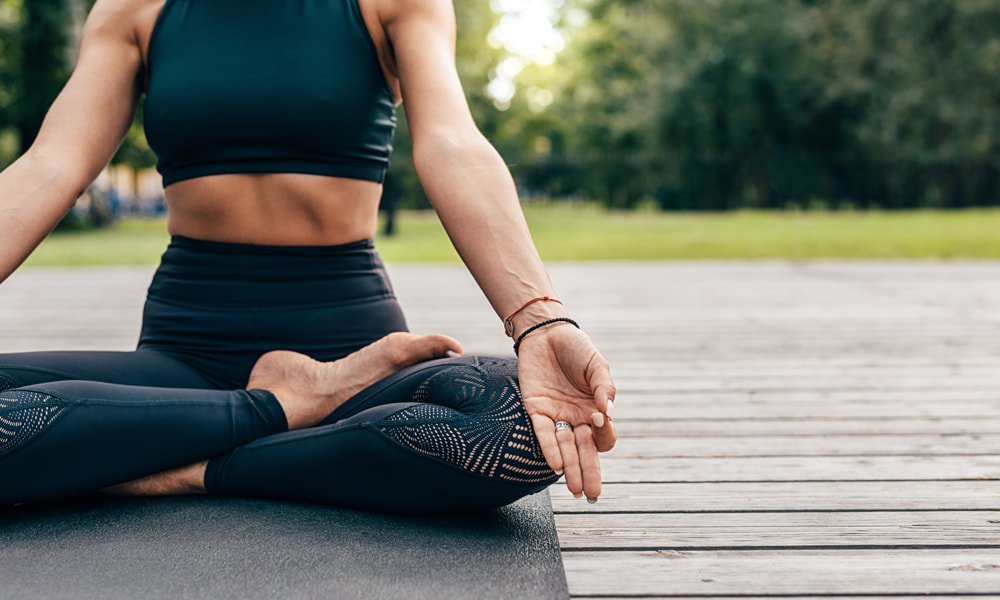Many new practitioners ask questions like how often to do yoga. Learn more in this article.
If you’ve recently decided to make yoga a regular part of your life, that’s fantastic news! It has a ton of mental, physical, and spiritual benefits that cannot be replicated in any other form of exercise.
Now that you’ve made this decision though, you might be a little confused about how often you should be practicing. Is there such a thing as too much or too little yoga? You might be wondering if you even benefit from practicing once in a while or if you need to be getting your asanas on every day to reap the benefits.
What’s important to keep in mind is that yoga is not the same as a regular workout. It focuses on the connection between body and mind and goes far beyond getting that lean yogi body you’ve always wanted. We’re going to look at the reasons why you should make yoga a regular part of your life and whether or not you should be practicing every day.
Contents
Why Practice Yoga?
When it comes to why most people practice yoga, studies have shown that most beginners see it as a physical exercise. That said, for the vast majority of people, the reasons for doing yoga change the further they get in their journey. In an additional study, it was found that 62% of students and 85% of teachers changed their primary reason for practicing yoga after a period of time with the main focus becoming spirituality.
Yoga promotes a range of benefits for your mind, body, and spirit. Some of the most notable benefits include:
- Increased strength and flexibility
- Relief from anxiety
- Self-awareness
- Improved balance
- Lower cholesterol
- Weight loss
- Improved sleep
- Improved organ function
- Relief from constipation
- Increased energy
- Reduced risk of heart disease
Whether you began your practice for one or more of the above reasons, it’s likely that you will continue to find more and more purpose in your yoga journey. Its aim is truly to unite your mind and body and promote a sense of overall wellbeing – and not just dropping a few pounds.
It’s Not the Same for Everyone

Another thing that’s important to keep in mind is that yoga is not the same for everyone. First-time yogis may be intimated when participating in a group class, feeling like they should be on the same level as their classmates. No matter where you are on your yoga journey, having the support of your instructor and your fellow yogis is greatly beneficial when it comes to learning proper form and deepening your practice.
An important thing to remember is that it’s is about your journey. It is not about whether or not the person next to you has better form or can hold their Tree Pose without toppling over. It is about the connection between your body and mind. You may never be able to do certain poses simply because your body does not work that way. That is why there are modifications available. Yoga is truly for everyone and wishing to improve your strength and balance to keep up with others is counterproductive.
Can I Get Injured Practicing Yoga?
Regardless of why you have decided to make yoga a part of your life, it’s important to know that you can get injured. In fact, statistics show that between 2001 and 2014, 29,590 patients were seen in the hospital in the United States for yoga-related injuries.
That’s why it’s important to keep in mind that yoga is no joke. If you have any underlying health or medical conditions, it’s important to check with your physician before starting any new physical activity. This is also why modifications exist. Whether or not you have an underlying physical condition, do not push through if you feel pain.
It’s important to remember that you need to start slowly with any new physical activity. Yoga is not just about being Zen and relaxed while the weight magically drops off of you. It’s about building strength and flexibility by way of a very real (and sometimes very difficult) physical activity.
It’s also important to change up your routine on a semi-regular basis. As with any physical activity, you can develop Repetitive Strain Injury (RSI) by practicing the same movements over and over again, overusing certain muscles. In this case, you will likely have to take a rest from exercise altogether which is hugely counterproductive to your journey.
How Many Times Per Week Can I Practice?

How many times per week can you practice yoga? We would like to emphasize that we are not doctors. And even if we were, we could not give you advice on your body without knowing your history. Ultimately, you are the only one who can decide what is best for your lifestyle, body, and general wellbeing.
So, how often should you practice yoga? That depends on you. Some yogis practice every day and have no issue when it comes to making the time commitment or putting a strain on their bodies. If you’re looking to commit to a short practice every day (half-hour or less), it would be extremely beneficial to your body. You can come up with a yoga routine that is not strenuous on your body and meant to promote general relaxation and wellbeing over anything else.
If you’re looking to practice yoga for an hour to an hour and a half per day, we would not recommend doing so more than three to five times per week. With any kind of potentially strenuous physical activity, your body needs time to rest. While you may feel like rest time is counterproductive, it aids in muscle recovery, building strength, and making sure you stay healthy.
Will I Benefit from Practicing Yoga Once Per Week?
You may feel like you only have the time or energy to practice yoga once per week and wonder if this will actually benefit you. The good news is that yes, you will receive some benefits from practicing yoga once per week. That said, the benefits that you reap from one weekly yoga session won’t be the same as someone who practices three times a week or more.
How Often to Do Yoga: The Facts
Regardless of how often you choose to do yoga, you will start to see results right away, even if they are solely to do with your mental well-being.
While yoga can be extremely challenging physically, the goal is not to strain your body. Instead, aim to gradually increase your strength and flexibility so you can reap all of the benefits that yoga has to offer for your body and mind. At the end of the day, how often you practice yoga is completely up to you. Listen to your body and mind and decide for yourself.



